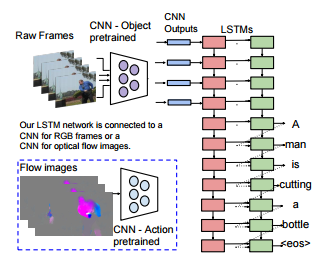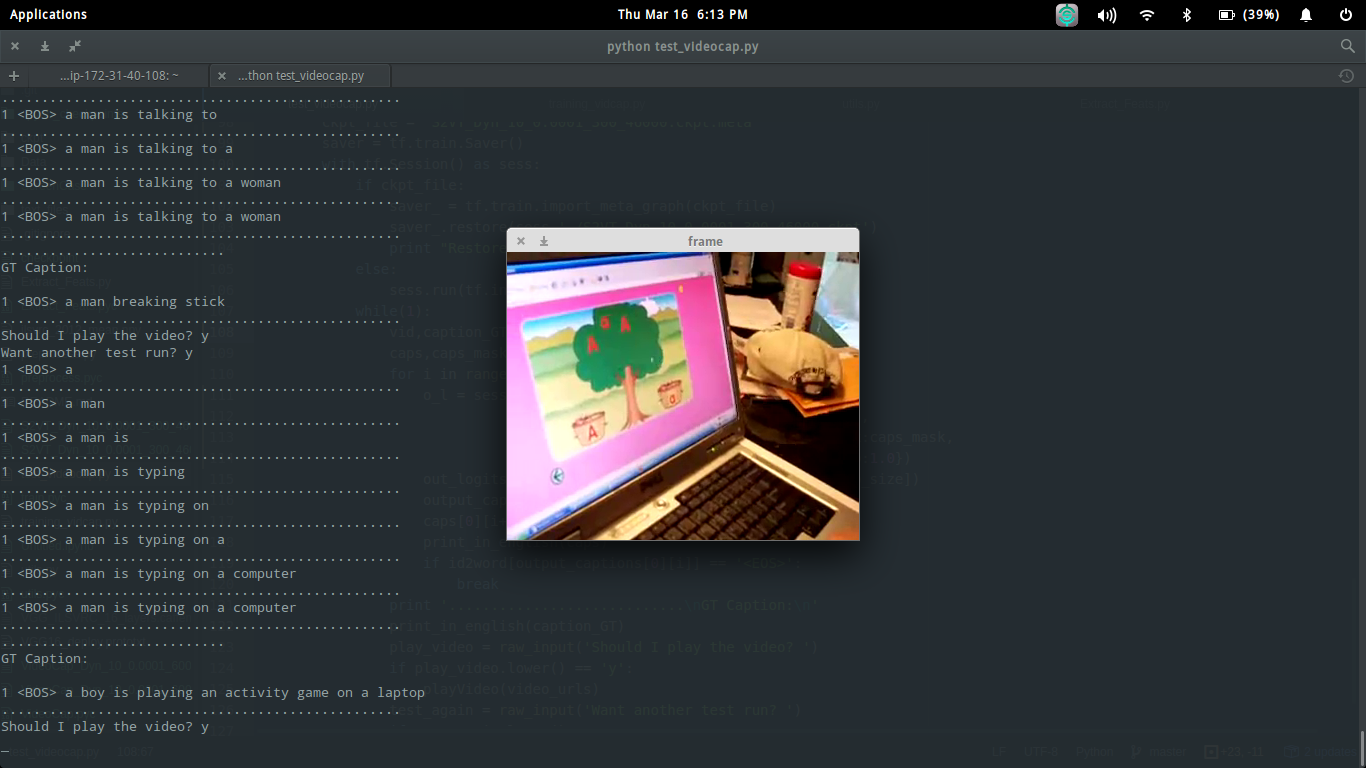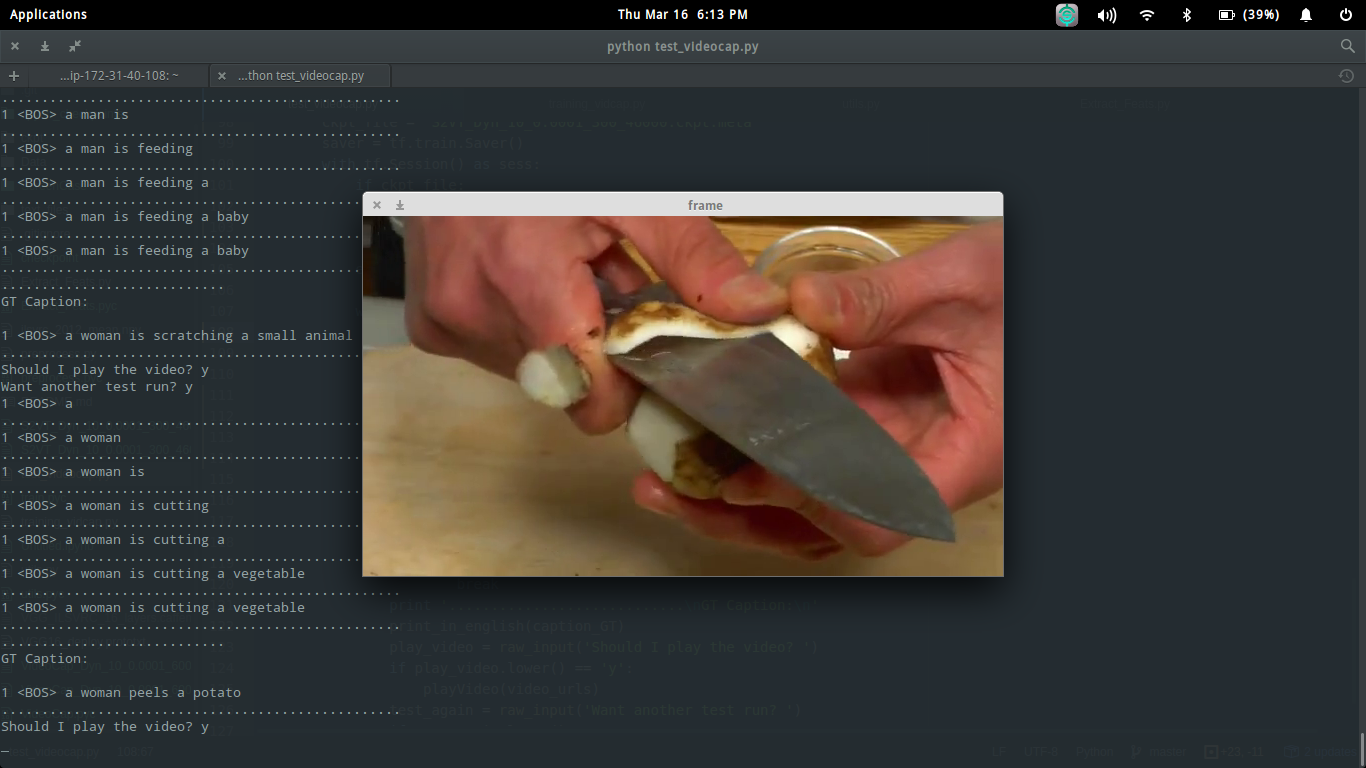This repository contains my implementation of a video captioning system. This system takes as input a video and generates a caption describing the event in the video.
I took inspiration from Sequence to Sequence -- Video to Text, a video captioning work proposed by researchers at the University of Texas, Austin.
For running my code and reproducing the results, the following packages need to be installed first. I have used Python 2.7 for the whole of this project.
Packages:
- TensorFlow
- Caffe
- NumPy
- cv2
- imageio
- scikit-image
Attached below is the architecture diagram of S2VT as given in their paper.
The working of the system while generating a caption for a given video is represented below diagrammatically.
- Install all the packages mentioned in the 'Requirements' section for the smooth running of this project.
- Using Vid2Url_Full.txt, download the dataset clips from Youtube and store in <YOUTUBE_CLIPS_DIR>.
- Example to use Vid2Url - {'vid1547': 'm1NR0uNNs5Y_104_110'}
- YouTube video identifier - m1NR0uNNs5Y
- Start time - 104 seconds, End time - 110 seconds
- Download frames between 104 seconds and 110 seconds in https://www.youtube.com/watch?v=m1NR0uNNs5Y
- Relevant frames for video id 'vid1547' have been downloaded
- Pass downloaded video paths and batch size (depending on hardware constraints) to extract_feats() in Extract_Feats.py to extract VGG16 features for the downloaded video clips and store in <VIDEO_DIR>.
- Change paths in lines 13 to 16 in utils.py to point to directories in your workspace.
- Run training_vidcap.py with the number of epochs as a command line argument. eg. python training_vidcap.py 10
- Pass saved checkpoint files from Step 5 to test_videocap.py to run trained model on the validation set.
Attached below are a few screenshots from caption generation for videos from the validation set.
Even though S2VT was trained on MSVD, M-VAD and MPII-MD, I have trained my system only on MSVD, which can be downloaded here.
A demo of my system can be found here
- Sequence to Sequence -- Video to Text - Subhasini Venugopalan et al.



